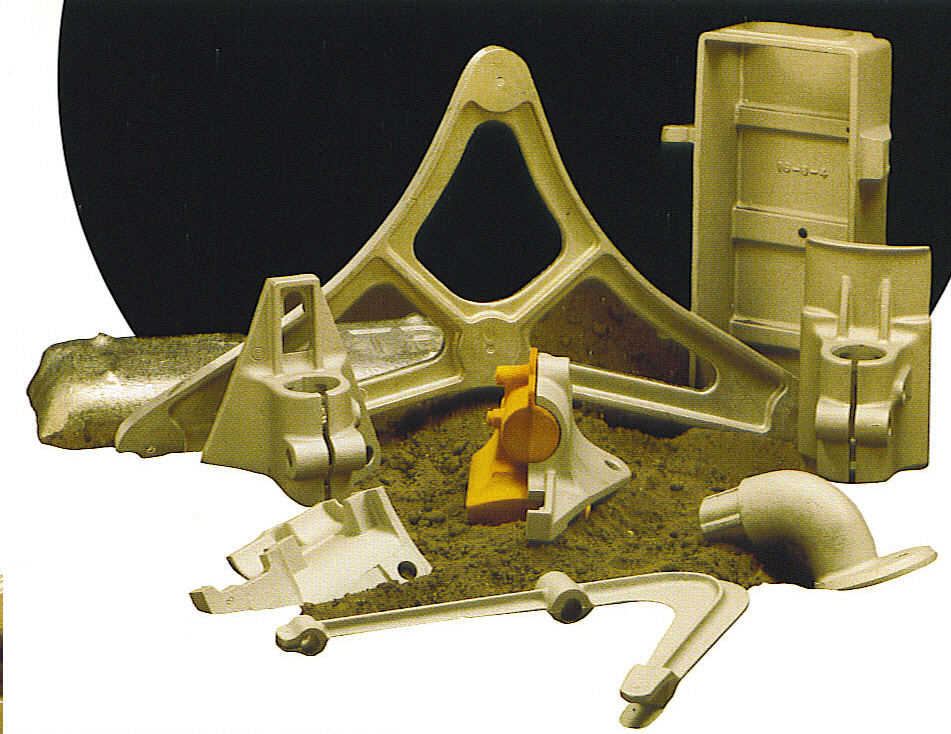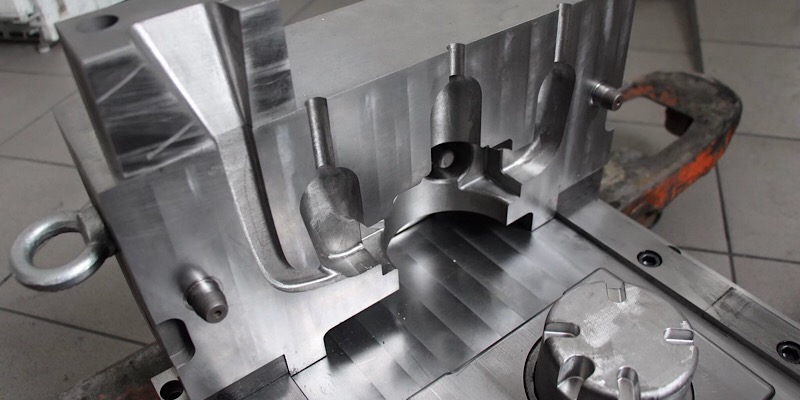The importance of partnering with an experienced Aluminum Foundry
Discovering the Advantages and Practical Use Aluminum Castings in Today's Market
Light weight aluminum castings have actually come to be progressively relevant in different markets because of their unique attributes. Their lightweight nature and resistance to rust make them appropriate for demanding applications. Furthermore, the superior strength-to-weight proportion offers substantial advantages in layout and manufacturing. As markets proceed to explore their possibility, the full extent of light weight aluminum spreadings' applications and advantages stays to be totally revealed. What exists ahead for this flexible product?
The Lightweight Advantage of Aluminum Castings
Numerous products are used in manufacturing, aluminum castings stand out primarily due to their light-weight buildings. This particular makes light weight aluminum spreadings an eye-catching choice for different markets, specifically in aerospace and auto applications, where weight reduction is vital for boosting gas performance and efficiency. The light-weight nature of light weight aluminum permits manufacturers to create components that are simpler to mount and take care of, ultimately reducing labor expenses.
The capacity to create complicated shapes without significant weight fines allows designers to innovate while preserving architectural integrity. Aluminum castings can successfully replace much heavier materials, resulting in significant cost savings in shipping and operational prices. Their light-weight advantage also adds to boosted item long life, as lighter components often lead to lowered damage on machinery. Overall, the lightweight homes of aluminum spreadings supply producers with an affordable edge, cultivating improvements in product style and efficiency throughout different sectors.

Exceptional Deterioration Resistance
Light weight aluminum castings have an all-natural resistance to oxidation, which greatly boosts their durability in various settings. This integral property not just adds to their resilience but additionally lines up with the lightweight benefit that aluminum offers. Therefore, aluminum spreadings are significantly recognized for their exceptional deterioration resistance in various applications.

Normally Resistant to Oxidation
One of the standout features of aluminum spreadings is their phenomenal deterioration resistance, which stems from an all-natural oxidation procedure. When exposed to air, light weight aluminum responds to form a thin, safety layer of light weight aluminum oxide. This layer serves as a barrier versus more oxidation and secures the underlying metal from harsh aspects such as moisture and salts. Unlike various other steels, this oxide layer is self-repairing; if damaged, it quickly reforms when subjected to air. This distinct residential or commercial property improves the long life of light weight aluminum castings in numerous environments, making them suitable for applications in sectors such as aerospace, vehicle, and marine. The all-natural resistance to oxidation considerably reduces maintenance costs and raises the reliability of aluminum spreadings in demanding conditions.
Lightweight Longevity Benefit
The lightweight nature of light weight aluminum spreadings contributes considerably to their resilience, making them a useful choice in numerous sectors. This exceptional resilience is mainly credited to aluminum's inherent resistance to rust, which is improved better via anodizing and various other surface area therapies. Unlike many metals, aluminum does not rust; instead, it forms a safety oxide layer that shields it from ecological damage. This home is especially beneficial in markets such as vehicle and aerospace, where weight decrease is important without compromising strength. Additionally, the longevity of light weight aluminum spreadings decreases upkeep prices and substitutes, offering economic benefits in time. Consequently, their light-weight toughness and corrosion resistance position light weight aluminum castings as a superior product for modern manufacturing applications.
Superior Strength-to-Weight Proportion
An exceptional attribute of aluminum spreadings is their remarkable strength-to-weight proportion, which makes them highly preferable in numerous applications. This intrinsic home allows aluminum castings to endure substantial tension while remaining light-weight, a crucial consider markets such as aerospace, auto, and manufacturing. Engineers commonly favor light weight aluminum castings for parts that require both toughness and lowered weight, boosting fuel efficiency and efficiency.
The high strength-to-weight proportion also helps with the layout of intricate shapes and structures, making light weight aluminum spreadings versatile for complicated applications. Moreover, the ability to maintain architectural honesty under tough conditions assurances durability and integrity in items, from airplane structures to automotive components. This advantage adds to the expanding trend of making use of aluminum spreadings in ingenious layouts, inevitably causing boosted capability and performance across varied markets. The exceptional strength-to-weight ratio of aluminum castings places them as a crucial product in modern-day design and manufacturing.
Cost-Effectiveness in Production
Cost-effectiveness in aluminum spreading production is mainly attained with reduced material waste and reliable manufacturing processes. By optimizing layouts and using innovative techniques, manufacturers can lessen excess material use while maintaining quality requirements. This method not just lowers production expenses however additionally adds to a lot more lasting techniques within the industry.
Decreased Material Waste
Minimizing product waste in light weight aluminum spreading procedures significantly improves production efficiency. By enhancing the design and manufacturing strategies, business can minimize excess scrap and enhance source utilization. This decrease in waste not only reduces product prices but also contributes to a much more lasting production design. The capability to reuse light weight aluminum additional supports cost-effectiveness, enabling producers to reclaim and reuse products without endangering top quality. As the market progressively concentrates on sustainability, decreased material waste aligns with environmental objectives while at the same time boosting earnings. Ultimately, reliable use basic materials strengthens the competitive setting of companies in the market, making light weight aluminum spreadings a beneficial option in numerous applications. The calculated method to reducing waste mirrors a dedication to both environmental and financial obligation.
Efficient Production Processes
While standard production processes can sustain considerable costs, light weight aluminum casting supplies an extra effective alternative that boosts overall manufacturing success. This method minimizes product waste and permits specific control over the production procedure, leading to decreased labor and functional expenses. The capacity to produce intricate shapes with less steps additionally simplifies production, adding to shorter lead times. In addition, aluminum's lightweight nature and superb thermal conductivity enable power cost savings throughout production and in the final application. By making use of modern spreading modern technologies, producers can attain greater throughput without sacrificing top quality. Consequently, aluminum casting stands out as a cost-effective service, making it an eye-catching option for companies aiming to optimize their manufacturing procedures in today's open market.
Versatility Throughout Industries
Light you can try this out weight aluminum castings show remarkable versatility throughout different markets, as they can be customized to meet specific needs and applications. In the automobile sector, aluminum castings are utilized in engine blocks, transmission real estates, and wheels, providing light-weight yet resilient remedies that enhance fuel performance. The aerospace industry likewise profits from light click now weight aluminum castings, using them in architectural elements and engine components due to their strength-to-weight proportion.
In the durable goods market, producers utilize light weight aluminum spreadings for products ranging from cooking equipment to furniture, giving both aesthetic appeal and performance. The electronic devices market makes use of light weight aluminum castings for housings and heat sinks, guaranteeing efficient thermal administration. Additionally, the construction market leverages light weight aluminum spreadings for architectural elements and structural elements, improving sturdiness and layout versatility. This wide applicability highlights aluminum spreadings as a necessary source, fulfilling the varied demands of numerous markets while preserving high efficiency and dependability.
Sustainability and Environmental Effect
As markets increasingly prioritize lasting practices, light weight aluminum castings become a green selection due to their recyclability and low ecological impact. Aluminum is among one of the most recycled materials internationally, with the capacity to be repurposed several times without destruction of high quality. This characteristic considerably minimizes the need for raw materials and power intake related to primary aluminum production, which is energy-intensive.
Furthermore, light weight aluminum castings add to lightweight layouts, causing sustain performance in transportation applications such as aerospace and automotive markets. Their resilience and resistance to corrosion extend product life-spans, further decreasing waste and source usage gradually. Additionally, lots of suppliers are embracing responsible sourcing and eco pleasant manufacturing methods, enhancing the sustainability of aluminum casting processes. In general, light weight aluminum spreadings stand for a functional service for organizations aiming to minimize their ecological influence while accomplishing performance and effectiveness.
Developments in Aluminum Spreading Technologies
Recent developments in light weight aluminum spreading innovations have greatly boosted the effectiveness and top quality of manufacturing procedures. Developments such as 3D printing and progressed mold-making methods have made it possible for makers to produce this page intricate layouts with minimized product waste. This change not just enhances the precision of cast elements yet additionally shortens preparations, permitting quick prototyping and faster market access.
The consolidation of sophisticated computer simulations help in anticipating possible flaws throughout spreading, leading to higher-quality results. The usage of light-weight alloys has actually also contributed to the development of more powerful, more durable items, satisfying sectors ranging from automobile to aerospace
In addition, automated casting processes have arised, lessening human mistake and enhancing manufacturing speed. Jointly, these innovations are changing the aluminum spreading landscape, driving better competition and sustainability in manufacturing. As industries proceed to evolve, these innovations will play an important function in meeting future needs for performance and high quality.
Frequently Asked Inquiries
Exactly How Do Aluminum Castings Compare to Various Other Metals in Terms of Thermal Conductivity?
Aluminum spreadings display exceptional thermal conductivity compared to many metals, such as steel and iron - Aluminum Foundry. Their lightweight nature and reliable warm distribution make them ideal for applications needing effective thermal administration in different markets
What Are the Typical Defects Located in Aluminum Castings?
Common issues in light weight aluminum spreadings include porosity, shrinking, inclusions, and surface area irregularities. These concerns often arise from improper cooling rates, inadequate mold and mildew design, or contaminations, affecting the general top quality and performance of the end product.
Can Aluminum Castings Be Recycled, and Exactly how?
Aluminum spreadings can be reused properly. The procedure includes gathering, melting, and changing the aluminum, which decreases waste and saves resources. This recycling adds to sustainability while maintaining the material's properties for future use.
What Are the Common Lead Times for Light Weight Aluminum Spreading Production?
Generally, preparations for light weight aluminum casting manufacturing variety from two to six weeks, depending upon elements such as intricacy, tooling requirements, and production volume. Performance can improve with established vendor connections and maximized production processes.
Just how Does the Surface Finish Affect Aluminum Casting Performance?
The surface area finish markedly impacts light weight aluminum spreading performance by affecting corrosion resistance, aesthetic high quality, and rubbing characteristics. A smoother surface boosts toughness and functionality, while a rougher appearance can improve bond for succeeding layers or treatments.
Lots of products are used in production, light weight aluminum spreadings stand out primarily due to their light-weight residential properties. When revealed to air, aluminum responds to create a thin, protective layer of aluminum oxide. Cost-effectiveness in aluminum casting production is mainly accomplished via lowered product waste and reliable manufacturing procedures. Lowering product waste in light weight aluminum spreading procedures greatly improves production efficiency. Inevitably, efficient use of raw materials enhances the affordable position of businesses in the market, making aluminum spreadings a positive choice in different applications.